Northern Vietnam
Hanoi Captital
Mai Chau
Bai Dinh Pagoda is a popular spiritual destination for travelers interested in learning about Ninh Binh’s and Vietnam’s culture and history, thanks to its spectacular architecture and stunning natural landscape.
Bai Dinh Pagoda is a pagoda complex located in the Hoa Lu Ancient Capital relic area and is part of the Trang An Scenic Complex.
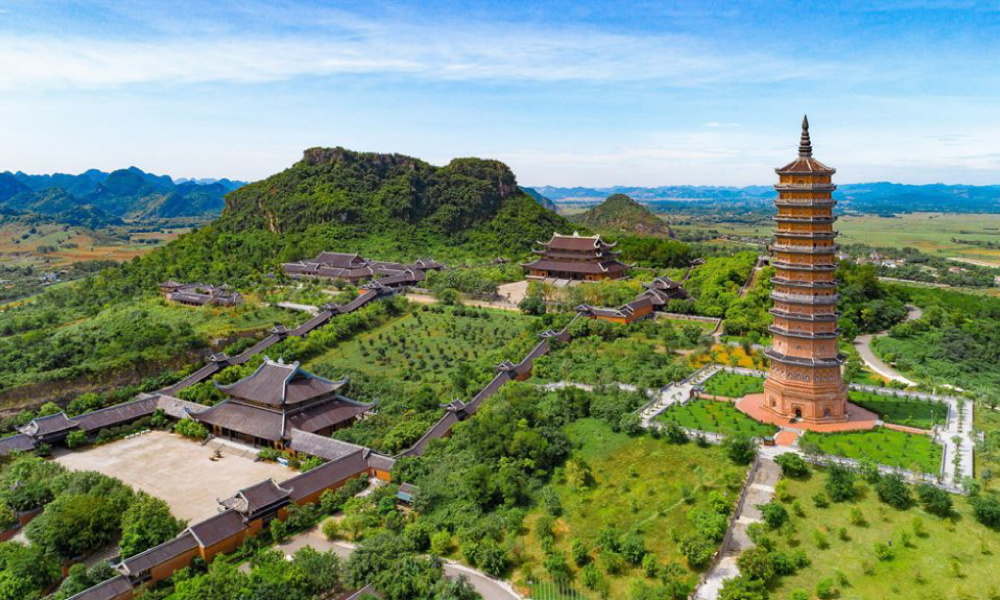
The Bai Dinh Pagoda complex spans over 600 hectares, including 27 hectares dedicated to the ancient pagoda and 80 hectares for the new pagoda. This is not only the biggest pagoda in Southeast Asia, but it also holds other remarkable records:
On June 23, 2014, the World Heritage Committee designated the Trang An Scenic Landscape Complex (containing Bai Dinh Pagoda) as Vietnam’s first combined World Heritage Site for both culture and nature.
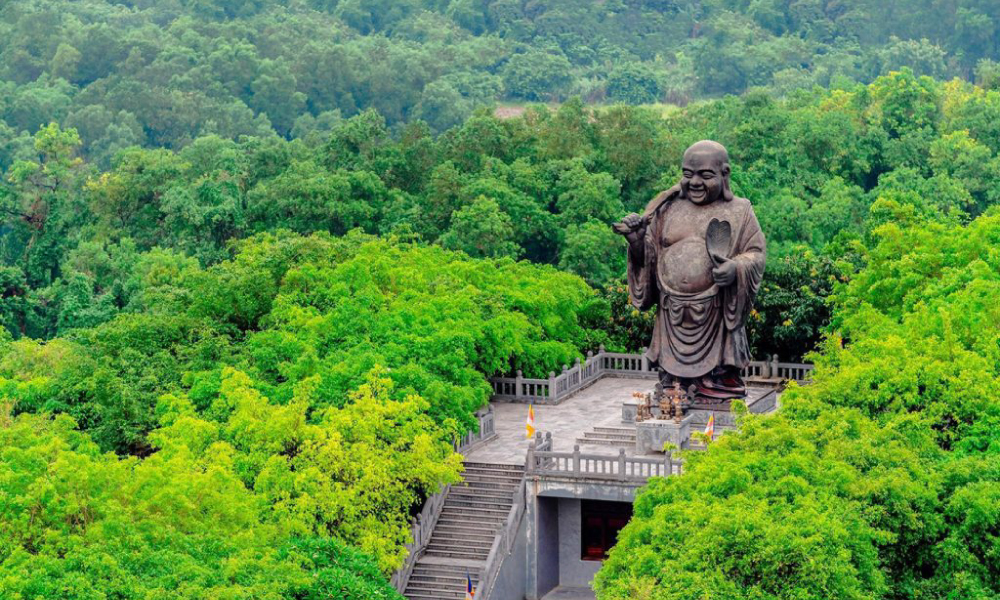
With its sacred space and spectacular scenery, Bai Dinh Pagoda is a wonderful site for tourists seeking peace and tranquillity while admiring the beauty of Vietnamese Buddhism.
More than 1000 years ago, the Dinh, Tien Le, and Ly dynasties established their capital in Ninh Binh. Because these dynasties all valued Buddhism, countless pagodas and temples were built here, including Bai Dinh Pagoda.
The ancient Bai Dinh Pagoda was built on the Trang An mountain range, in an ideal location with its back resting against the mountain and overlooking the gorgeous forest and river. In the old days, Bai Dinh Pagoda was chosen by monarchs for performing rituals such as praying for rain or flag-raising ceremonies to inspire warriors.
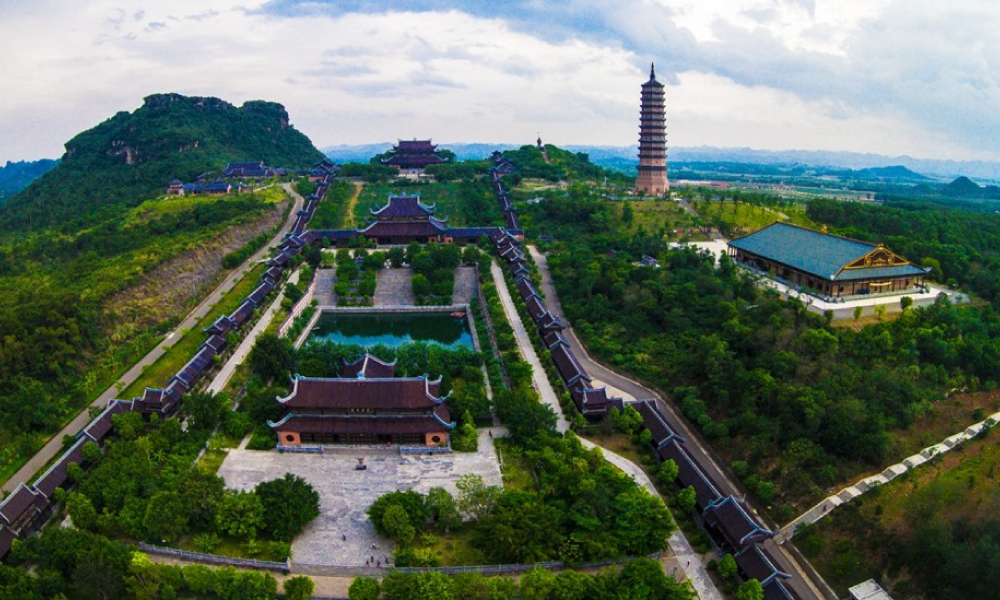
Despite the ups and downs of the country’s history, Bai Dinh Pagoda preserves the majority of the Ly Dynasty-era architecture and antiquities. Since 2003, the pagoda area has been extended and rebuilt on the basis of the historic pagoda, featuring several notable architectures such as Tam Quan Gate, Bell Tower, Quan The Am Palace, and La Han Corridor.
Bai Dinh Pagoda was designated as a national historical, cultural, and revolutionary relic in 1997, and it has since become a spiritual hub for Buddhist devotion across Vietnam.
Bai Dinh Pagoda is located in Gia Sinh commune, Gia Vien district, approximately 18 kilometers from Ninh Binh’s city center and 100 kilometers from Hanoi.
Visitors who want to get to Bai Dinh Pagoda on a budget and without restrictions can do it by motorcycle or automobile. To get to the Bai Dinh Pagoda complex from Hanoi, use Giai Phong Road – National Highway 1A – National Highway 12B and follow the signage for approximately 90km. Travelers should ask locals or use a navigation app to be sure.
In addition to going by themselves, visitors can choose public transport to get to Bai Dinh Pagoda.
After arriving in Ninh Binh, visitors can take a bus or taxi to Bai Dinh Pagoda.
With a large area containing different areas, visitors should use electric cars when moving around Bai Dinh Pagoda to save time and energy.
The car will pick up visitors from the waiting area and drive them down the 3.5-kilometer road to the Tam Quan Gate area of Bai Dinh Pagoda.
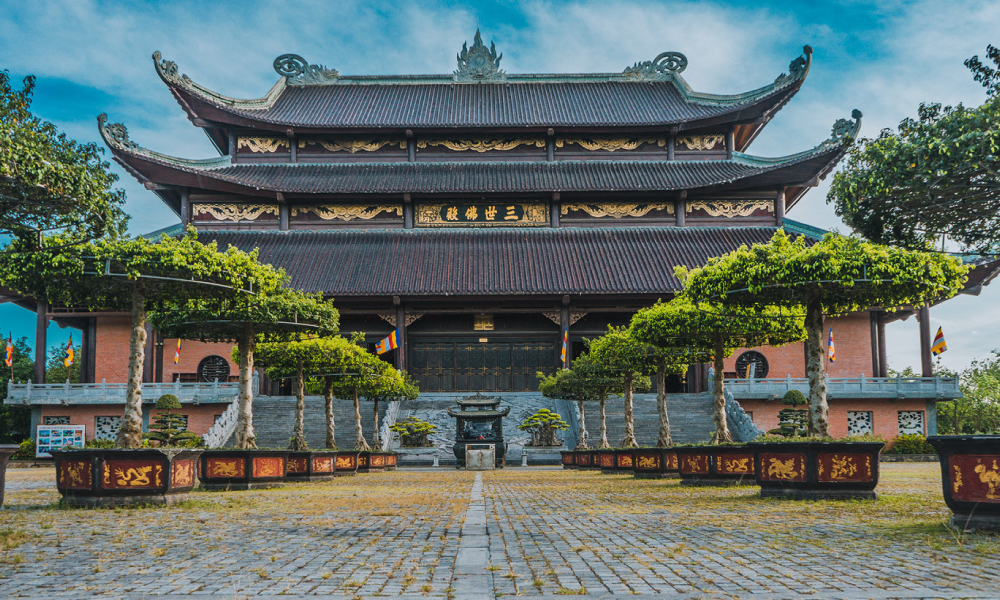
Note that, while electric cars are there to help, there are numerous places where visitors must walk, with the complete route potentially totaling thousands of steps, thus, visitors must eat and drink enough to maintain physical strength.
Early spring is usually a nice time to visit a temple to worship and pray for good luck, and Bai Dinh Pagoda is an excellent option. Visitors may appreciate the beauty of nature in full bloom, as well as the lively, thrilling environment created by people who have come to attend the Bai Dinh Spring Festival.
See more: Best Bai Dinh Pagoda, Ninh Binh tours 2025.
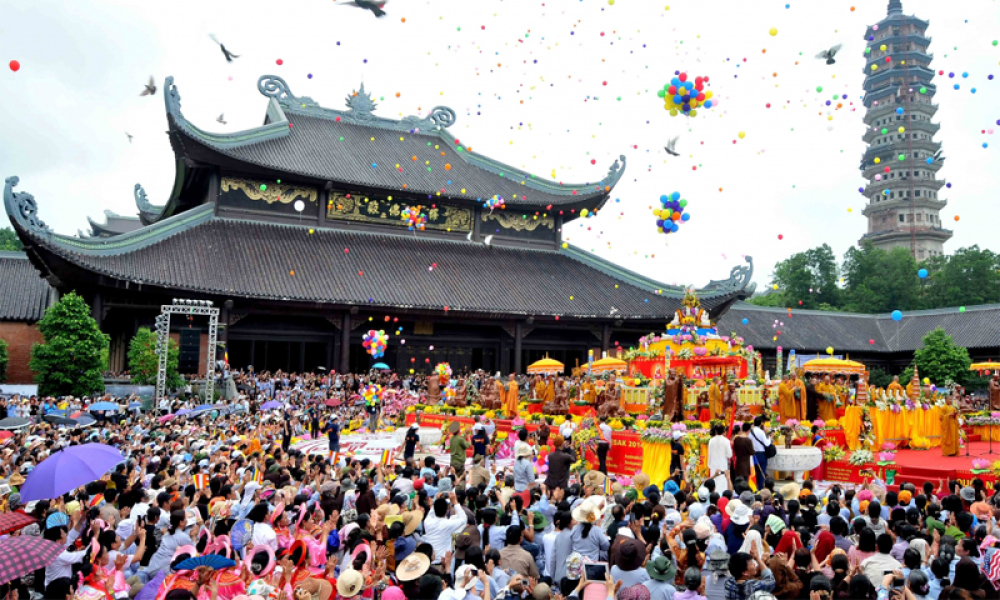
If you want to avoid crowds, visit the pagoda in the fall, between May and September, when the weather is pleasant and dry. Bai Dinh Pagoda appears solemn yet peaceful and tranquil, making it ideal for sightseeing or taking pictures!
The historic Bai Dinh Pagoda is located about 800 meters south of the Tam The Temple in the new pagoda complex.
This pagoda region is placed near the top of a mountain, creating a sense of calm and tranquility reminiscent of a fairy pagoda. The ancient Bai Dinh Pagoda is made up of a main hall in the center and temples for Saint Nguyen, Sang Cave, Toi Cave, and Cao Son Temple on the left and right sides.
This is where Zen Master Nguyen Minh Khong, the historic Bai Dinh Pagoda’s creator, is worshipped. The monarch nominated him as a national teacher, and the people referred to him as Duc Thanh Nguyen (Saint Nguyen). Not only that, he was also a famous doctor who cured many people.
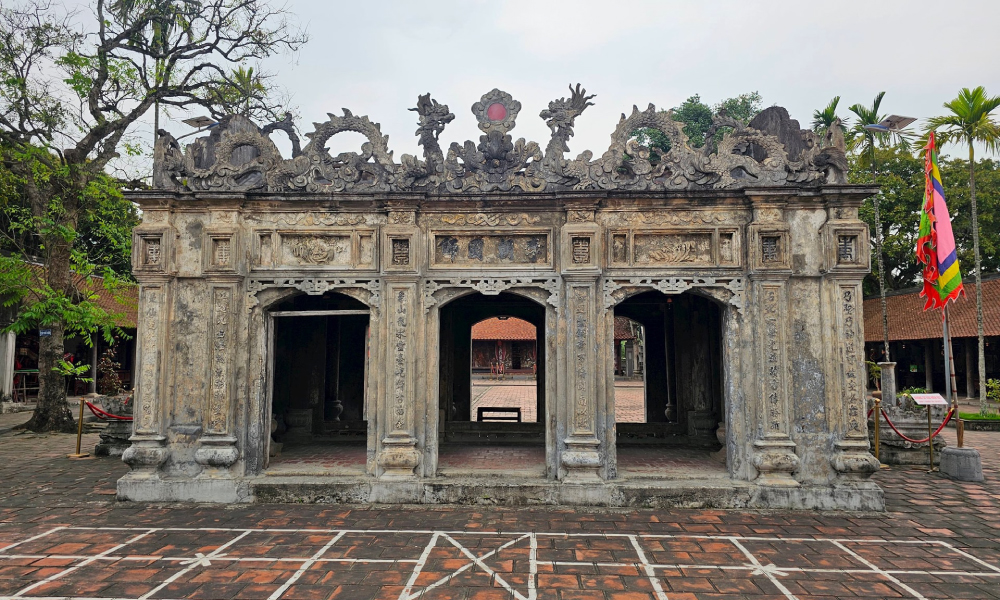
The old Bai Dinh Pagoda is notable for its Buddhist shrines, which are located in calm mountain caves such as Sang Cave and Toi Cave.
When tourists enter the cave, they will see the solemnly arranged worship area with bronze Buddha sculptures. Furthermore, the limestone ceiling and cave walls shine with unique curves, as if carved by nature, all enhancing the experience.
Ngoc Well, located at the foot of Bai Dinh Pagoda, is a big lake with a roughly 30-meter diameter, surrounded by lush trees. The well water has a wonderful natural jade hue and has never dried out. Legend has it that Zen master Nguyen Minh Khong (Saint Nguyen) used to take water from this well to make medicine to cure the king and everyone.
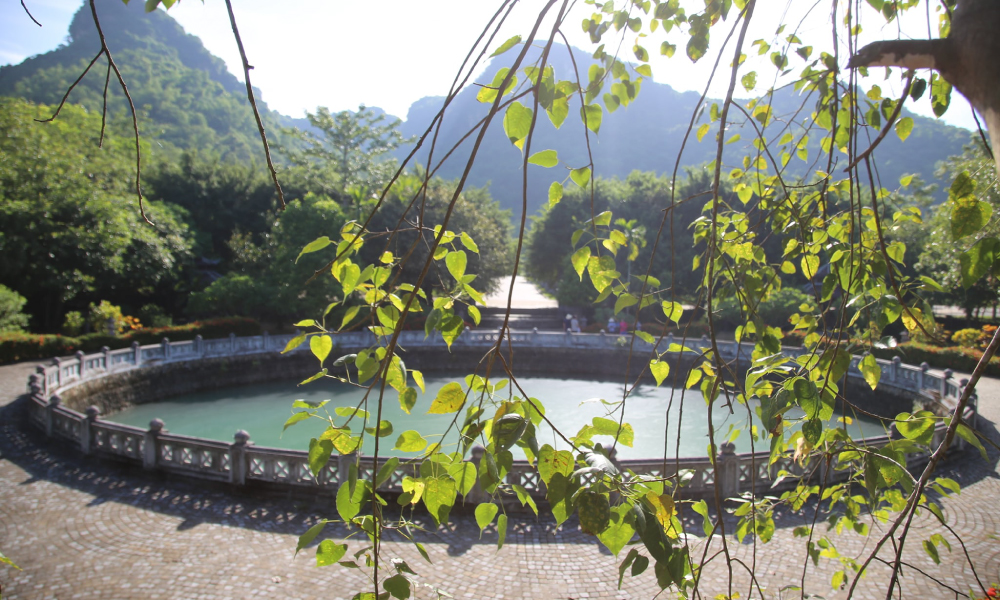
The new Bai Dinh Pagoda, located on the side of Trang An Mountain and leaning to the west of Hoa Lu Ancient Capital, spans 80 hectares, approximately three times the area of the original pagoda.
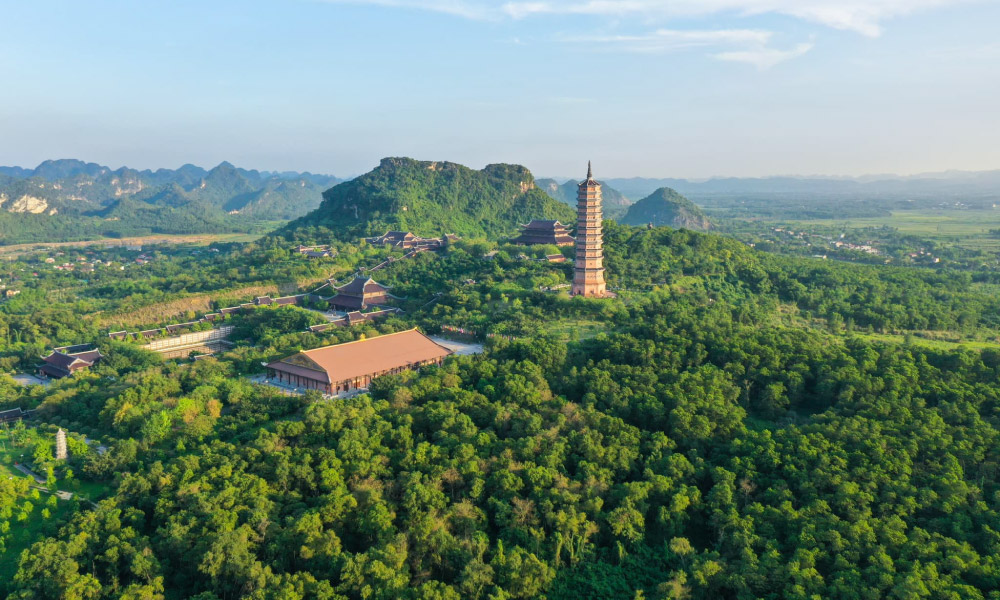
The pagoda’s major architecture includes Tam The and Quan Am temples, the Bao Thap area, the Bell Tower, the Maitreya Buddha statue, and a variety of additional infrastructure and auxiliary works completed in phases beginning in 2003.
This is the first gateway that tourists must pass through when visiting Bai Dinh Pagoda. Tam Quan (three gates) refers to three enormous gates with elaborate carvings: Khong Quan represents the gate of suffering, Trung Quan represents impermanence, and Gia Quan represents the gate of non-self (Anatta) in Buddhism.

The Dharma Lord Temple is one of the most significant architectural structures in the Bai Dinh Pagoda complex. The temple’s distinctive style, with two curving roofs, is both magnificent and imposing.
The temple’s interior features intricately carved wood and stone motifs. This region is particularly notable for a 100-ton, 9.5-meter-high, gold-plated bronze statue of Shakyamuni Buddha, which is Vietnam’s largest bronze Buddha statue.
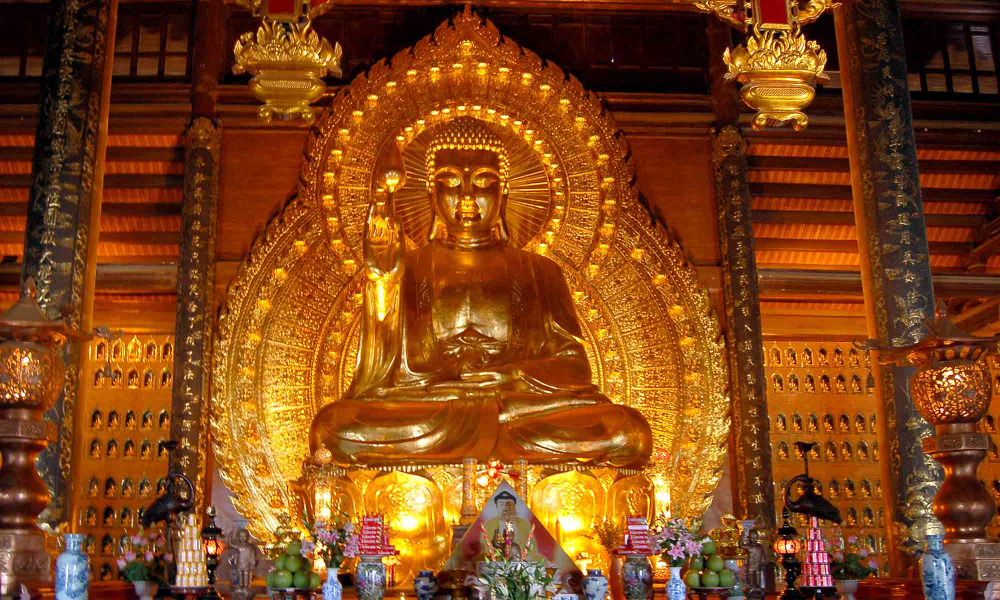
This is the biggest temple in the Bai Dinh pagoda complex, including three massive gold-plated bronze sculptures of Tam The Phat that represent the past, present, and future.
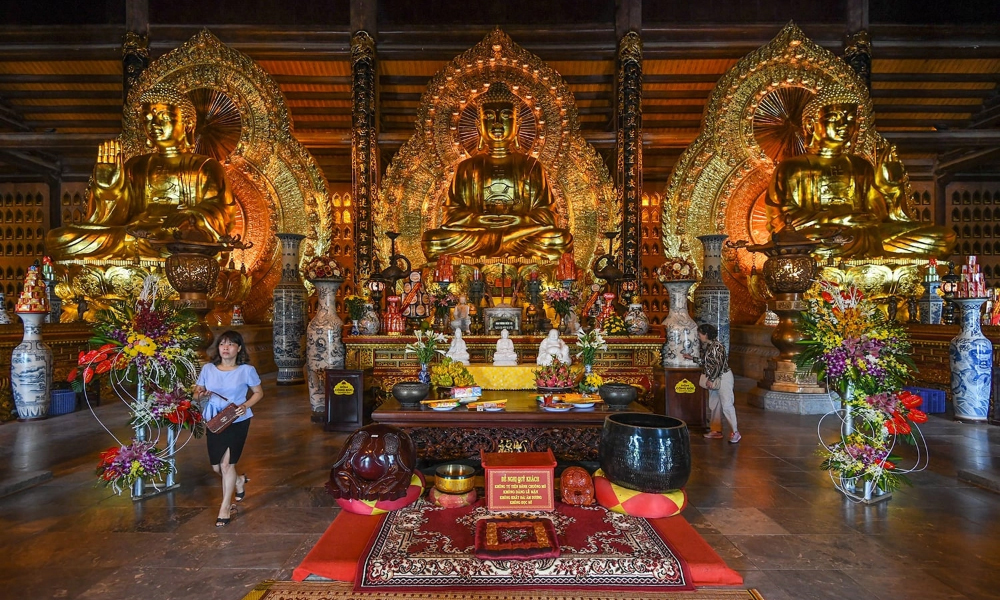
Tam The Temple’s spectacular building draws many tourists from near and far to study, particularly those who enjoy history and art!
This temple is made of wood, and in the center stands a 10-meter-high, 80-ton gold-plated figure of Guanyin Buddha, giving the entire structure an ancient and magnificent appearance.
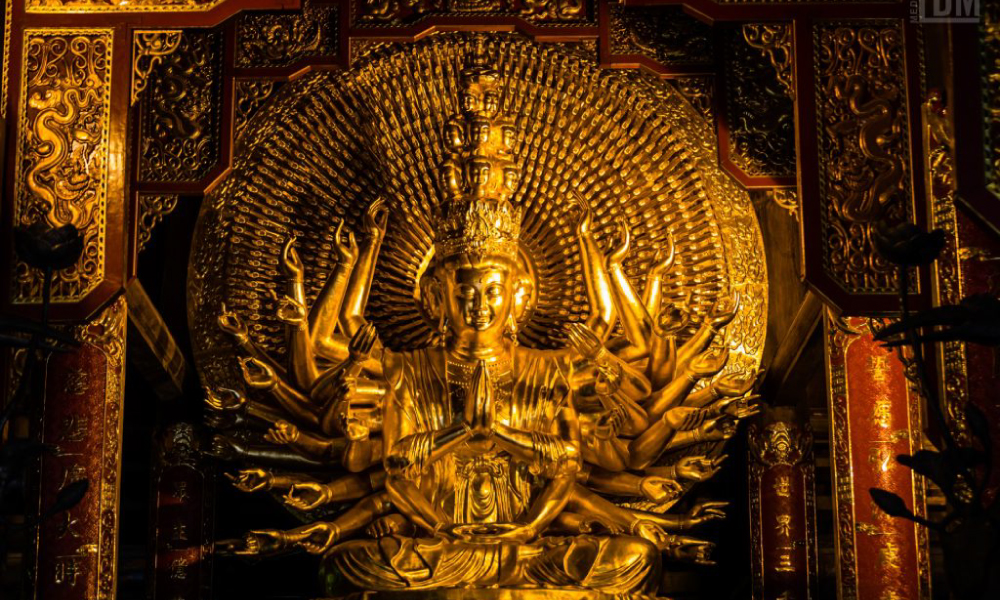
This is Asia’s longest La Han corridor and a centerpiece of Bai Dinh Pagoda, popular among travelers for sightseeing and photography. Along the roughly 3-kilometer-long road are 500 La Han figures carved from immaculate green stone, each with a delicate and vivid appearance and expression.
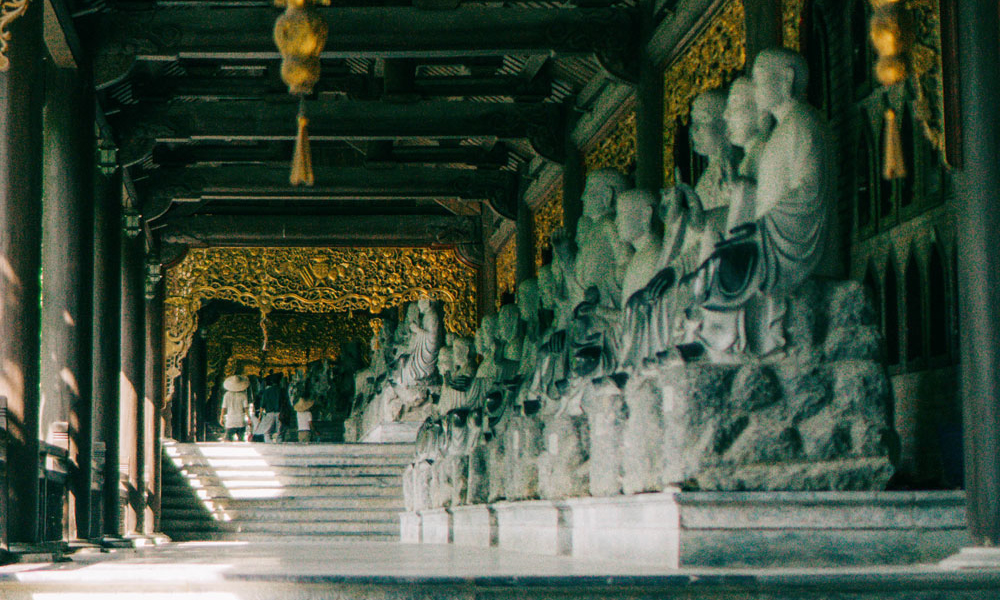
The bell tower of Bai Dinh Pagoda is an amazing photo location, with an octagonal base and three high curving roofs that resemble an intriguing lotus in the heart of the tranquil pagoda setting.
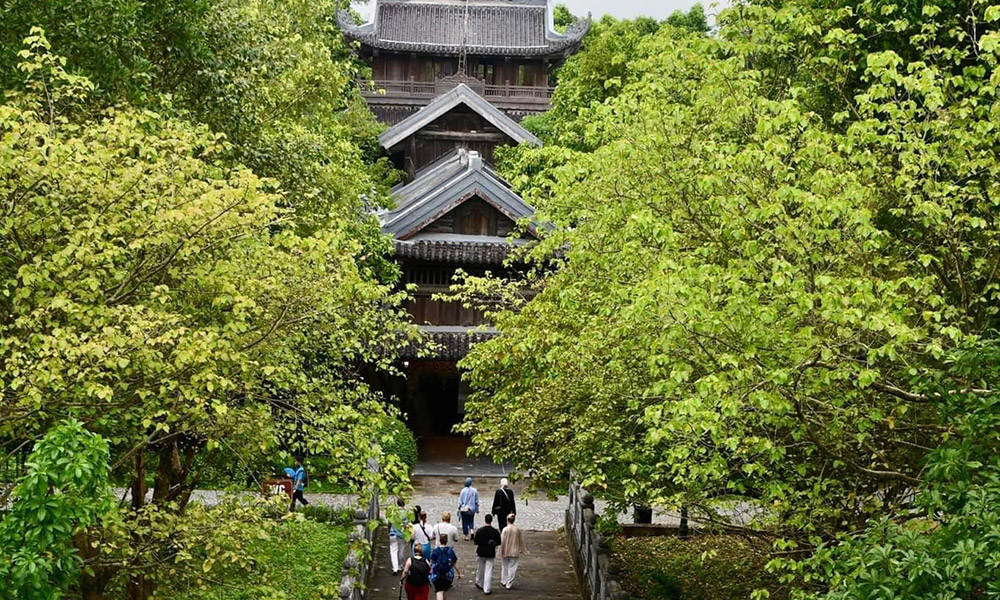
The focal point here is the bronze bell created by Hue craftsmen, which weighs up to 36 tons and is Vietnam’s largest bronze bell.
The stupa, located to the west of Tam The Temple, is one of the most distinctive works of Bai Dinh Pagoda. The stupa has a hexagonal foundation, 13 storeys, and is 99 meters tall. It is fully coated with Bat Trang baked bricks with warm red earth tones and elaborate ornamental designs.
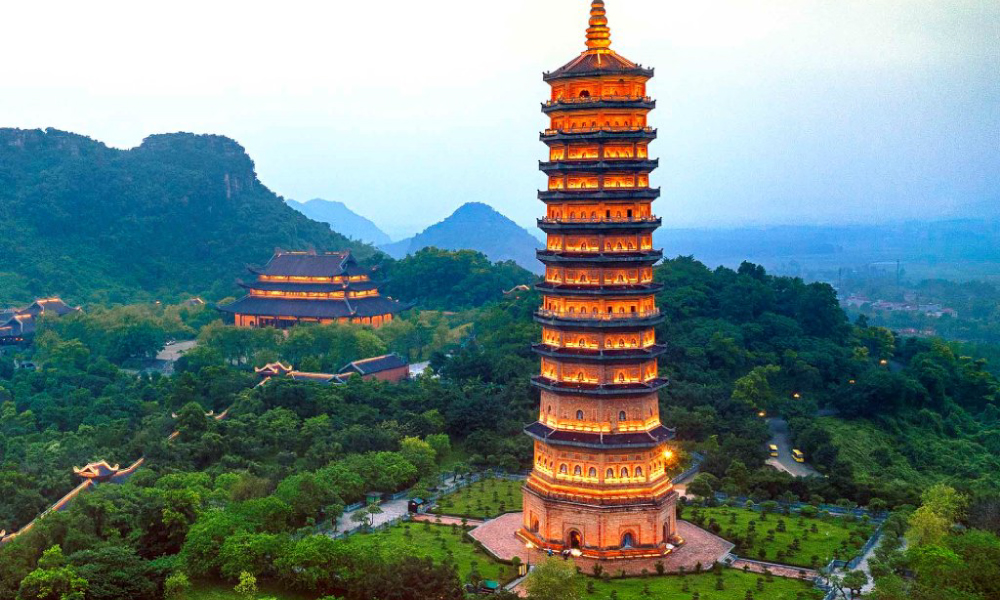
Around the stupa, tourists may discover little stone statues of Buddha seated on green stone pedestals with exquisite carvings. The stupa’s unique architecture, along with the peaceful surroundings, amazes and inspires tourists.
This is a must-see place when visiting Bai Dinh Pagoda!
In addition to the two major pagodas, the Bai Dinh pagoda complex includes auxiliary sites such as the cultural park and Buddhist academy, the welcome area and landscape park, traffic lanes and parking lots, and the Dam Thi lake area, among others.
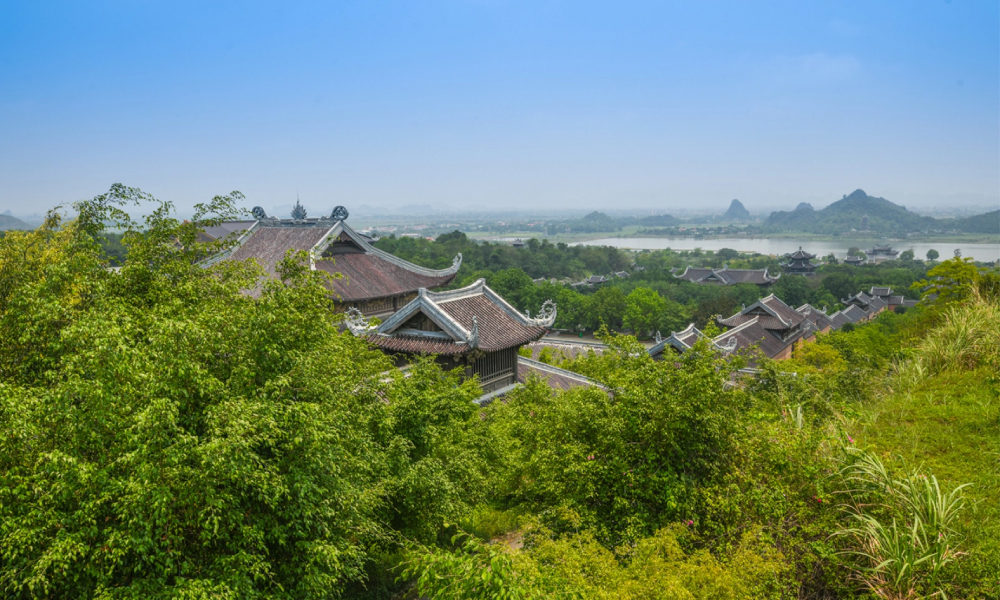
Visitors who want to stay longer at the pagoda could choose the Bai Dinh guesthouse. The guesthouse is located right in the pagoda grounds, with magnificent architecture and a calm natural setting, making it perfect for tourists to unwind.
Inside the pagoda complex, there is also the Cat Tuong restaurant, which has architecture that combines ancient Asian and modern European designs, as well as an open space where you can observe the Bai Dinh mountains and forests while eating wonderful vegetarian food or local delicacies.

Coming to Bai Dinh Pagoda, visitors can freely worship and explore the pagoda without buying a ticket. However, the pagoda also provides other services as follows:
With Fola Travel’s Bai Dinh Pagoda tours, the tour costs will be included in the tour price, so visitors just need to visit freely!
SHARE YOUR OPINION